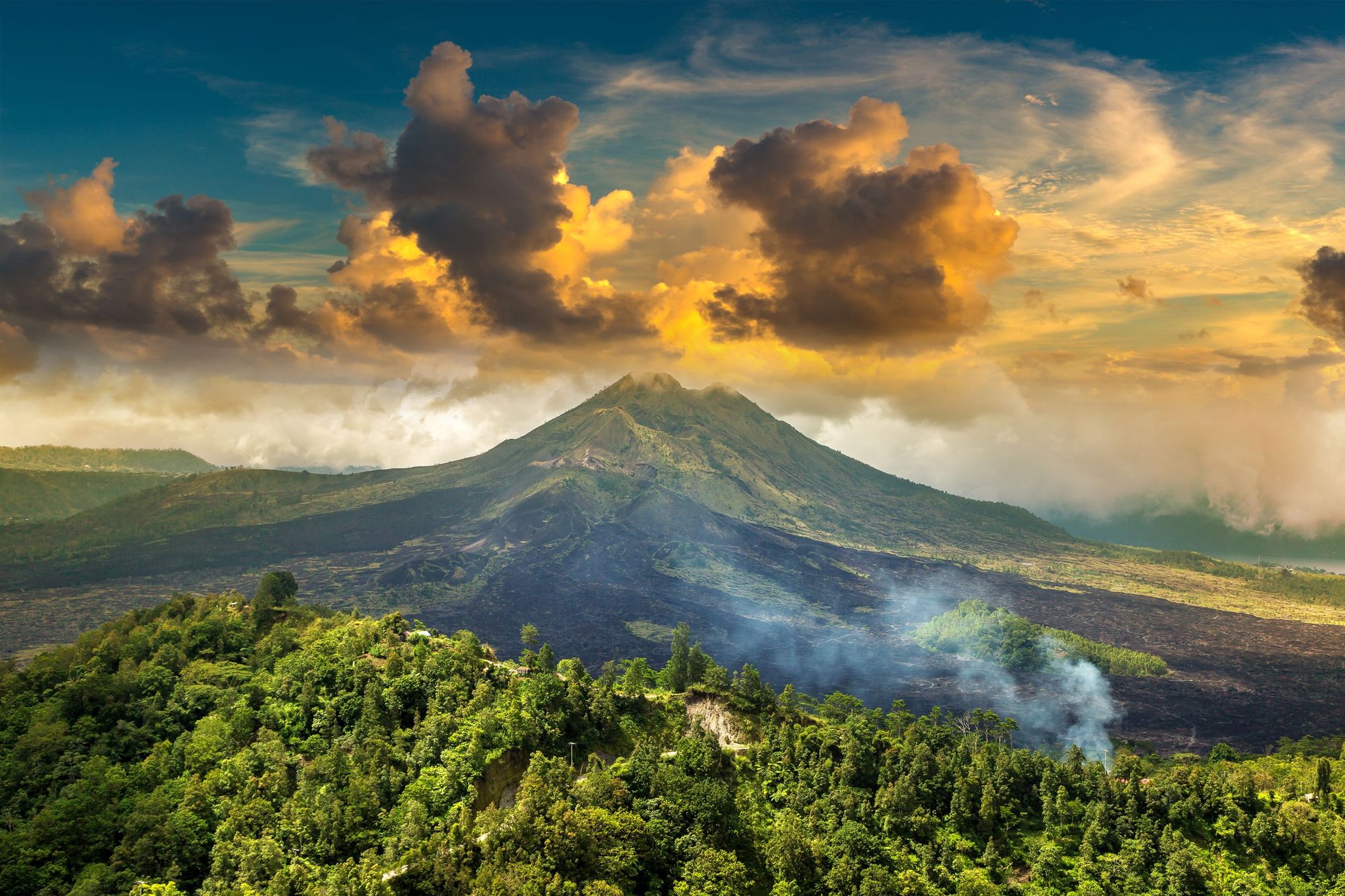For some, the Indonesian island of Bali conjures up images of turquoise water, bright coral reefs and perfect breaking waves. For others, it's the temples, waterfalls and jungles that come to mind; the sound of birdcall breaking the silence on an early morning hiking trail - or the sight of the sun rising over the island from the summit of an active volcano a few hours later.
"Even if you only have a short time you can come to Bali and experience volcano hiking, rock climbing, snorkelling, diving," says Yangyang Li, who's worked in tourism on Bali for seven years. "There are lots of cultural attractions too. Bali is very different from the rest of Indonesia - which is the populous Muslim country in the world - because Bali is majority Hindu, and has lots of other religions. They’re really open-minded in Bali, and very open to people from different cultures."
The route is not too difficult, but the hard thing is the elevation - you have a lot of elevation to climb...
All agree this idyllic island is an adventure paradise, so... where to start? If you're wondering what to do in Bali, you're in the right place. You've probably heard about overdevelopment in Bali, and possibly also come across 'overtourism' in Bali. This is an issue in places, but it's still very possibly to visit and see its beauty and tranquility in a way that benefits local communities on this island.
"There is overtourism in Bali, but not in all places," says Li. "If you want a classic tour, you might find some places very crowded, like Ubud and the south of Bali. But there are plenty of places which are much quieter that you will see on an adventure tour."
Here, we're going to look at eight of the best hikes and adventures in Bali, from the active volcanoes and glimmering lakes to rainforest waterfalls and green getaways in vibrant towns.
A guide is essential for exploring the rainforests and mountains of Bali safely and legally. It'll ensure you have the best time exploring, get the best information and stories available - and it helps local communities benefit from tourism.
Bali: The Basics
- Currency? Indonesian Rupiah.
- Language? Balinese (and Bahasa Indonesia).
- Plug adapter? Type C/F.
- Do I tip? 10%-20% as appropriate, if desired.
- Average beer price? 50,000 Rp (approx £2.69/$3.40).
- Nearest adventure? The Ultimate Volcano Adventure in Indonesia.
Where is Bali?
Bali is the westernmost of the Lesser Sunda Islands of Indonesia, one mile east of Java, which lies across the Bali Strait. It’s the fifth largest island in Indonesia, a country in Southeast Asia, located on the equator between the continents of Asia and Australia, and the Pacific and Indian Oceans. The capital of Bali, Denpasar, is the most populous city in the Lesser Sunda Islands.
When is the Best Time to Go to Bali?
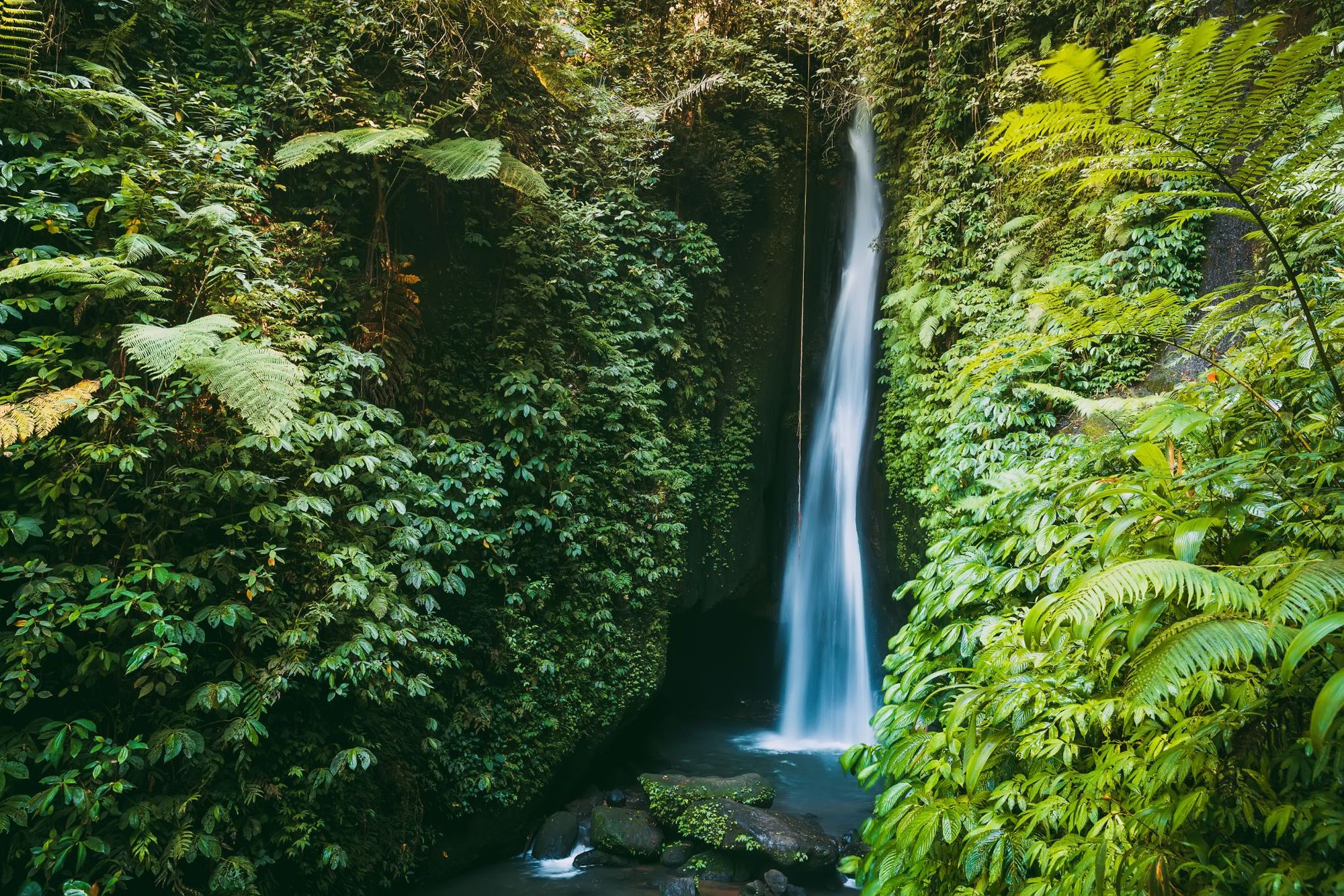
Bali’s geographical proximity to the equator means that it’s warm and humid year-round. That said, the year can be divided up into the wet and dry season. The former runs from October to April and the latter from May to September.
The best time to go hiking in Bali is during the dry season, when the sun is out, and the humidity is lower, meaning the trails are drier and less slippery. During the rainy season, trails can be muddy and tougher to navigate, and so the going can be a little slower (and a lot less pleasant). Flash floods can occur at any time of the year, though, so come prepared, and check forecasts regularly.
It can’t be said too often, a guide is essential for exploring the wilderness of Bali, whether that be the forests and mountains or the waterfalls and lakes.
"Generally, July and August is the really high season all across Indonesia except Raja Ampat, as it’s very windy, so we don’t organise trips over there during that time," says Li. "Otherwise, if you really don’t want to see people, you can go to Sumatra or Bunaken in Sulawesi. But Flores, Bali, Komodo - you’ll meet a lot of people. During the high seasons there are a lot of traffic jams."
1. Watch the Sunrise from Gunung Agung (3030m), Bali’s Highest Peak
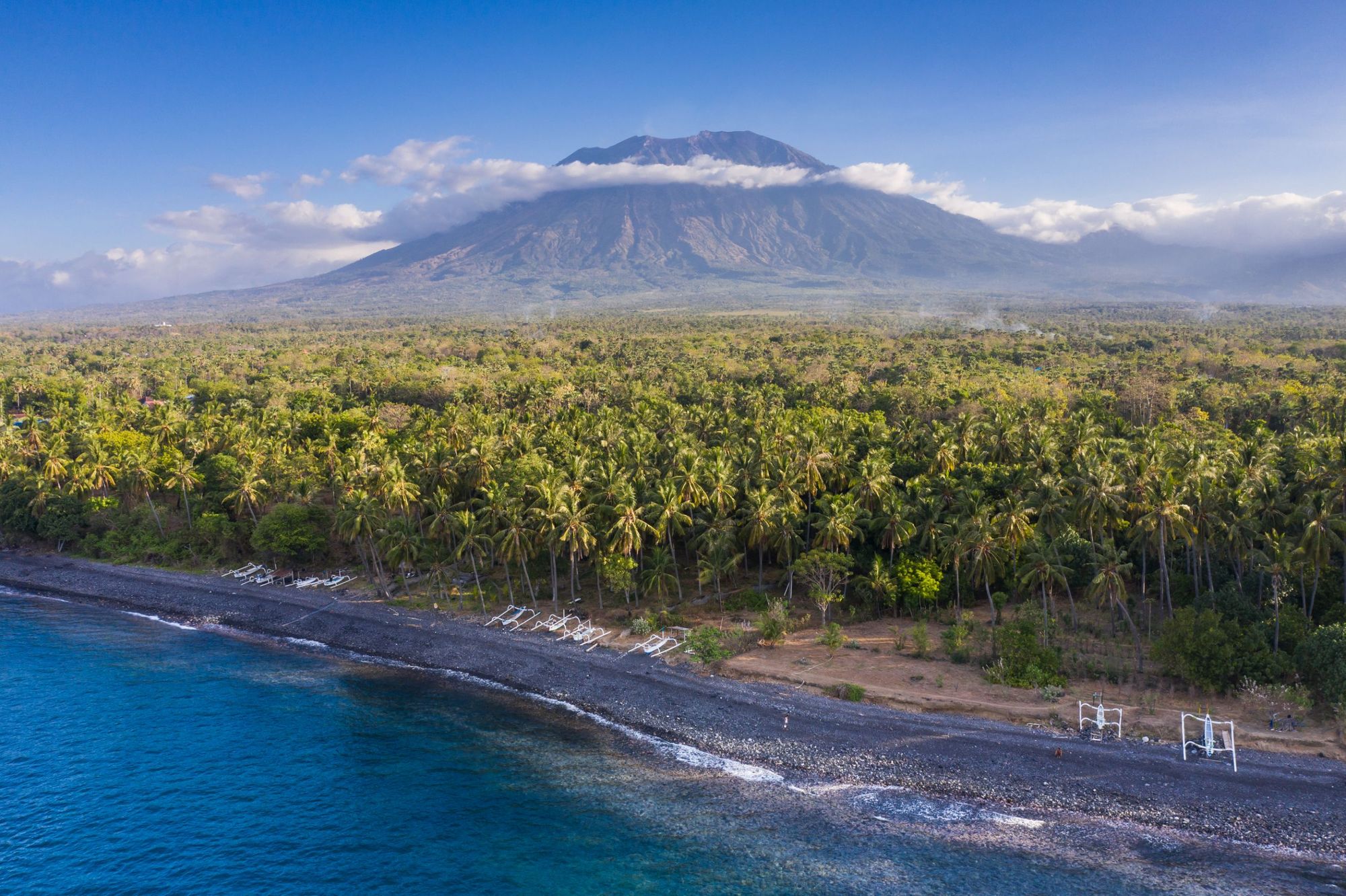
The slopes of Gunung Agung (3030m), gently inclining yet immensely high, can be seen from miles across Bali. This is the island’s highest peak, and an active volcano, with seismic activity and eruption last taking place between 2017-2019 (for the first time since 1964).
It's worth us noting at this point, Gunung is simply the Indonesian for 'Mount'.
"There are two ways to climb Agung," says Yangyang Li. "There is the Besakih Temple way. If you go this way you need to spend one night camping on the volcano, then you attempt the summit in the morning. Then there’s the Pura Pasar Agung route, which goes just to the top of Agung. You end up on a different part of the crater rim, so the view is not the same, but it's still beautiful.
"You start crossing the jungle and then you go to the forest and then you reach the rocky part. This one will be much easier so it won't take two days to climb up. Generally, it takes about six hours to go up. You are going to climb around 1000 metres up and down in a day, but it’s the easier route."
The latter hike starts from the Pasar Agung temple at 1,490m, one of the nine directional temples, or Kahyangan Jagat (palaces of the Gods) around Bali, said to protect the island from evil spirits.

The hike to the summit from here is demanding, and the round-trip in full can take anywhere from six to 12 hours.
"Agung is the highest volcano in Bali and it's very difficult," says Li. "Compared to Rinjani [in Lombok], it's easy peasy, but compared to the other volcanoes it’s hard. You need to be fit. So you won’t meet a lot of people there. The route is not too difficult, but the hard thing is the elevation - you have a lot of elevation to climb."
First, you’ll follow a dirt track rising through green vegetation, with ferns and pines. It’s straight uphill - and it says a lot that this is often said to be the easiest part of the hike. Once you pass the treeline, you’re onto more uncomfortable terrain - boulders and scree - before you reach the final scramble, which will take you to the summit crater.
It’s worth it to watch red and yellow of morning colour Bali and beyond...
Now for the bad news. If you’re going to make it to the top by sunrise you’ll need to start hiking by around 1am in the morning (note: bring a headtorch!) - which only makes the hours of uphill we'eve just listed even more challenging - but trust us, it’s worth it to watch red and yellow of morning colour Bali and beyond.
To repeat a point we’ve already made, a guide is absolutely essential for this hike.
The summit is believed by the Balinese people to be the home of the gods, including Lord Shiva. Eat your breakfast (or second breakfast) on top of the mountain, while you look down on the islands of Indonesia, then descend the volcano with the full day still left to explore (or more likely, to sleep).
2. Cycle the slopes beneath Gunung Batur (1,717m)
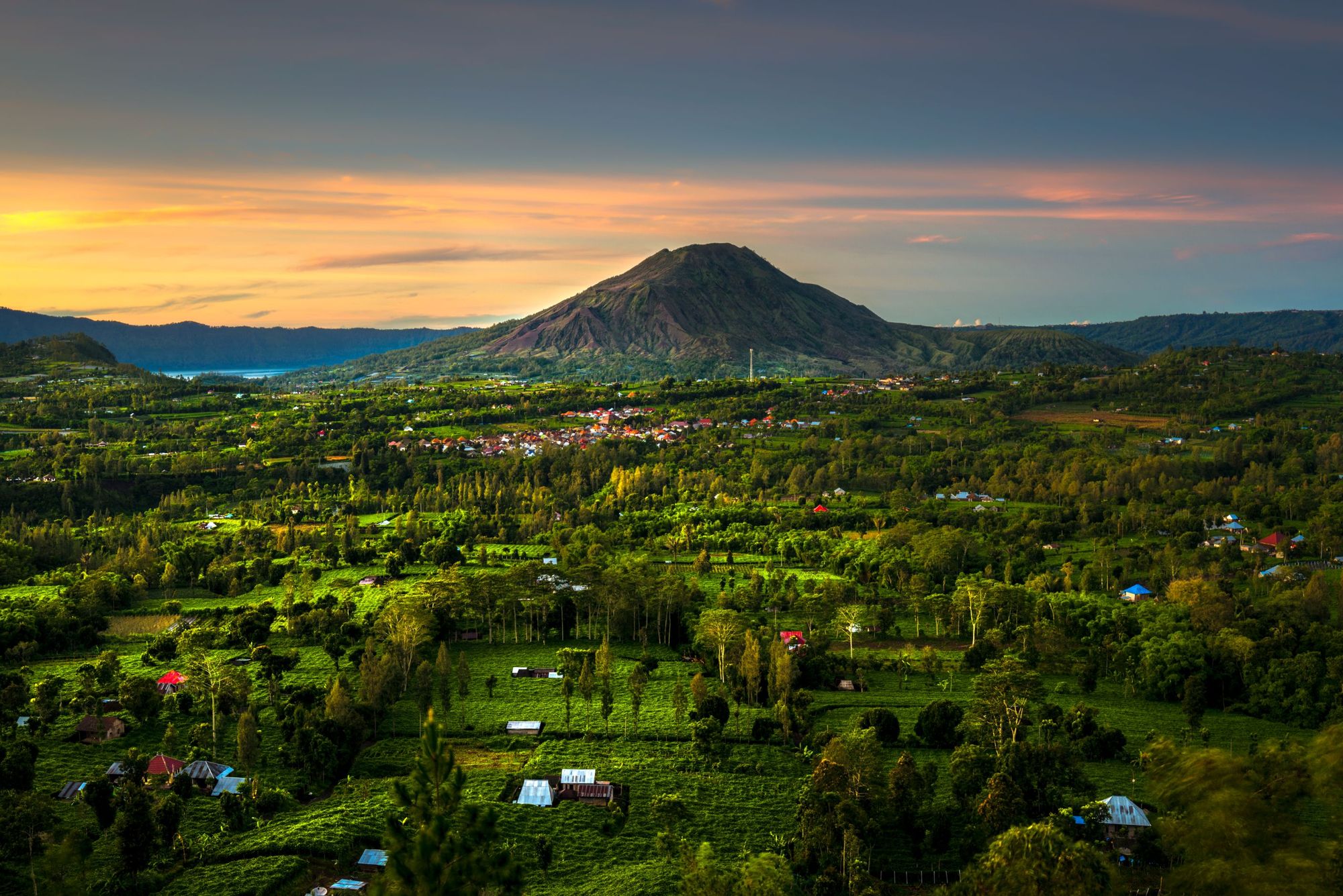
An hour outside of Ubud (the cultural capital, which we'll get onto shortly...) is Gunung Batur, the most active volcano in Bali, and one of the most scenic areas on the island. You can climb the mountain on a trail starting at the village of Toya Bungkah, with the walk taking around two hours. Early-rise guided hikes for are also available here, and can make for great practice ahead of climbing Agung.
For an entirely different experience though, head out on a bike tour and discover the forest trails and rocky, black lava fields. When you’re done, head back to Toya Bungkah and enjoy the geothermal hot spring, while looking out to Lake Batur.
Climbing Batur itself isn't too difficult, but that also means that there are a lot of tourists on the route. "Everyone can do it, even families," says Li. "On top of Batur during peak season you might meet 200 tourists. So that's a problem." Cycling the landscape means you get a slightly more authentic - or at least a quieter - experience.
3. Hike to the Haven of Sambangan
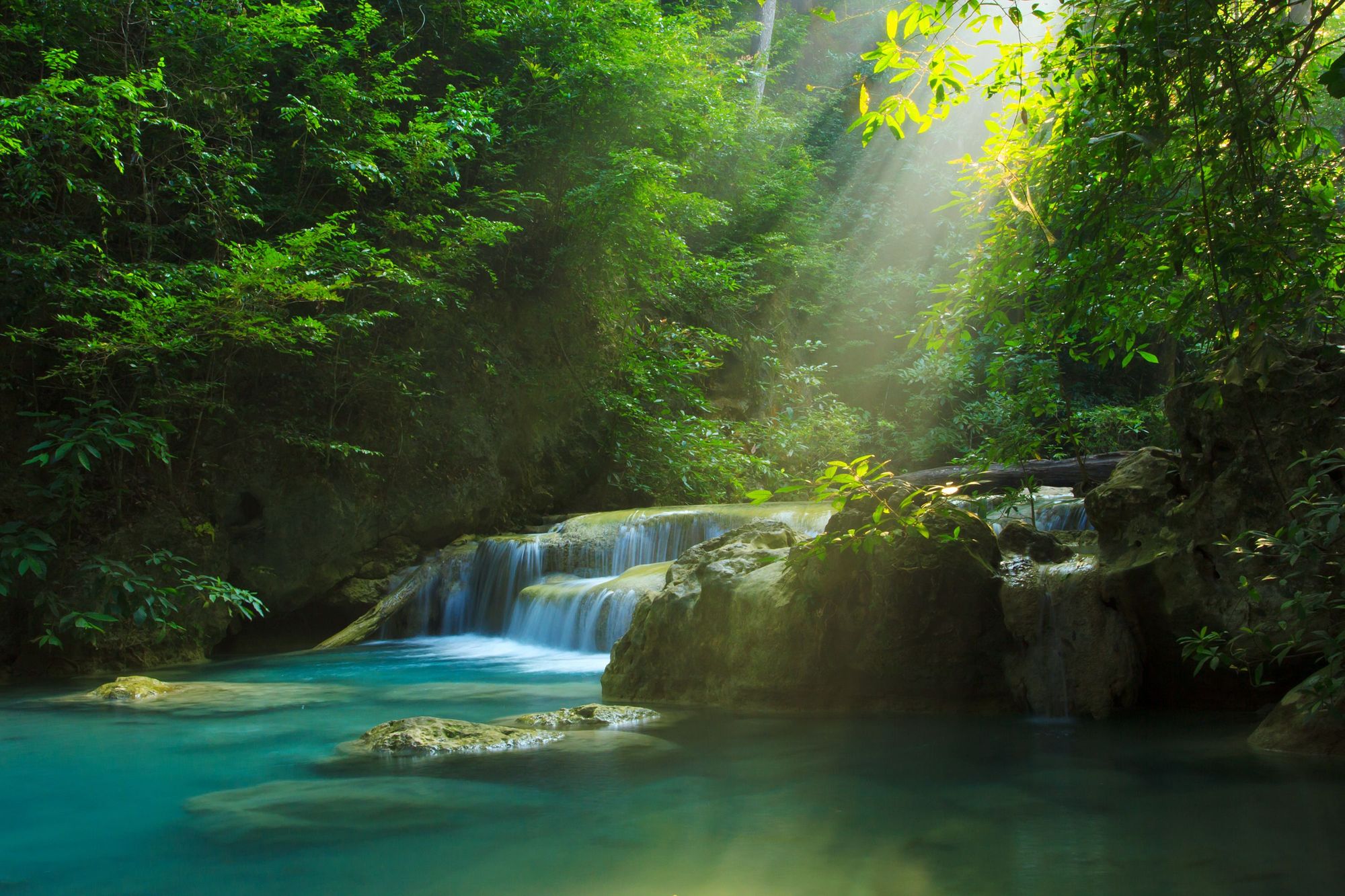
Hidden away in northern Bali you’ll find Sambangan Village, known by many as the Secret Village. It's almost untouched by modernity - and nearby sit the Secret Gardens. The area looks akin to what most people associate with paradise; clear, rock-lined rivers guiding the way to natural turquoise swimming pools and cascading waterfalls, framed by hanging greenery and canyon walls.

A guide is essential for this walk, and will keep you right. Reaching the falls from the village takes around 30 minutes, and the walk itself is a beauty. You’ll stroll past picturesque paddy fields, cocoa trees and coffee plantations, before becoming immersed in a forest of vibrant trees and exotic flowers, alive with wildlife. Take in the serene jungle walk, then enjoy the natural slide and jumping points around (adhering to the safety measures of your guide, of course).
4. Summit Bali’s Second Highest Peak, Gunung Batukaru (2,276m)
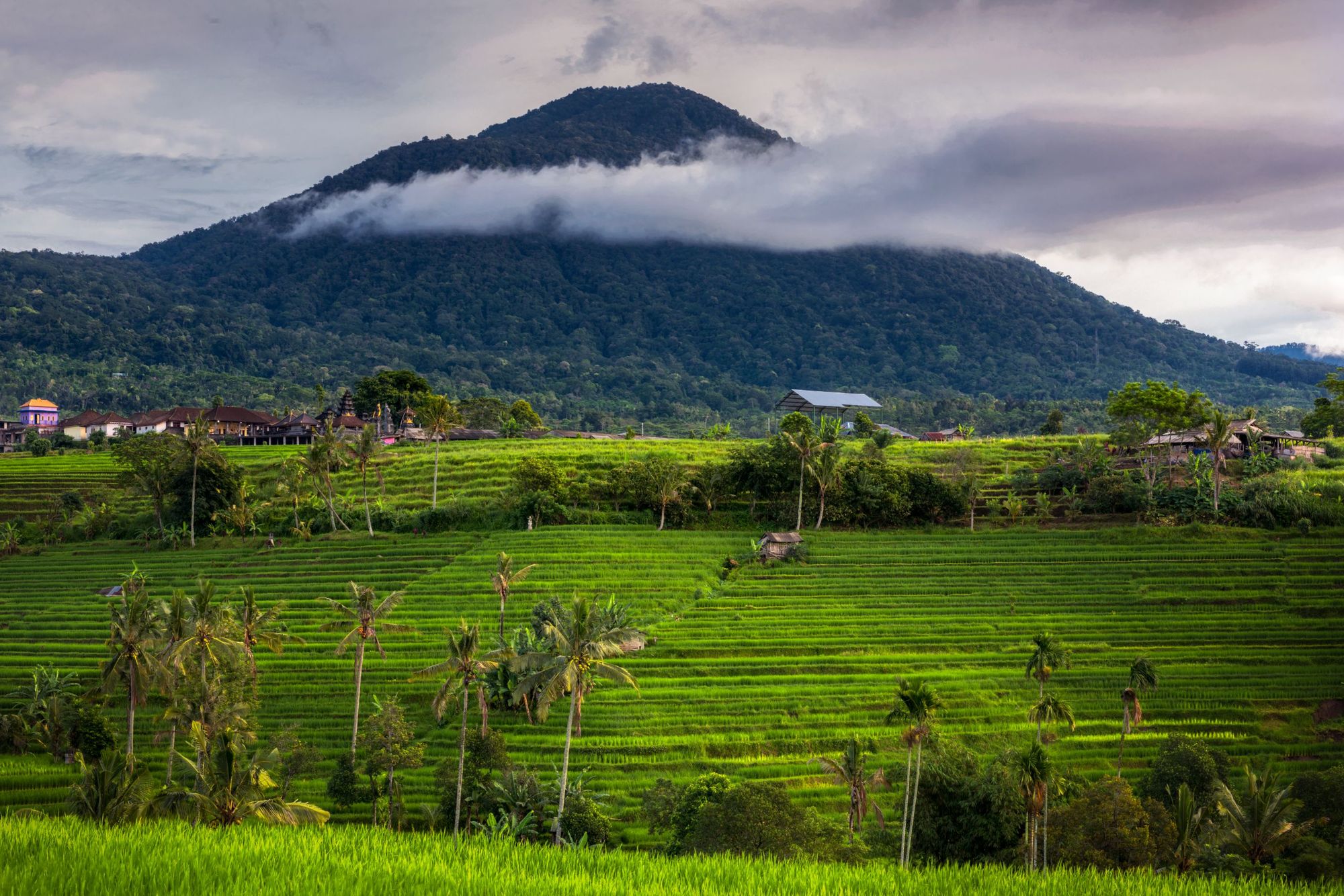
Gunung Batukaru is the second highest peak in Bali, measuring 2,276m high. The extinct volcano is located in one of the most biodiverse areas in all of Bali. It’s often said that the last true rainforests of the island sit on these lush, green slopes. Get lucky and you’ll spot some of the local wildlife, which ranges from leaf-eating monkeys and small deer to flying lizards, porcupines and anteaters.
"Batukaru is not touristy at all," says Yangyang Li. "When our groups go to do the ascent of Batakaru, they are the only people. Sometimes you might meet the local hunters, but you won't meet the other foreign tourists who are hiking.
This hike is quite difficult because you go through the jungle - deep, wild jungle...
"The top of Batakaru isn’t rocky like the other volcanoes. There’s grass on the top, and some trees. If it’s clear you can see all the way to the ocean. It looks like a mountain, not a volcano, because its extinct. This hike is quite difficult because you go through the jungle - deep, wild jungle. There are quite a lot of leeches; it’s very slippery and humid. So it’s completely different vegetation compared to Agung and Rinjani. Sometimes you might see wild animals, like pigs, or meet the hunters with their guns on their backs - it’s quite funny."
The route to the summit begins in a forest, rising to high alpine mountain streams, wildflowers and orchids. The views open up around 2000m, with the vegetation becoming thinner and the valleys on full show. If conditions are clear at the top, you’ll have a 360-degree lookout over the island of Bali. What’s nice about this route is that it doesn’t have to be an out-and-back. There’s more than one route up the mountain, so you can descend on a different path to add variety.
After completing the hike, visit Pura Luhur Batukaru, one of Bali’s most revered temples, which sits conveniently amongst the trees at the foot of the mountain. It’s home to a shrine dedicated to the god of Gunung Batukaru and the goddess of Lake Tamblingan, and is another of Bali’s nine Kahyangan Jagat.
5. Take the Campuhan Ridge Walk in Ubud
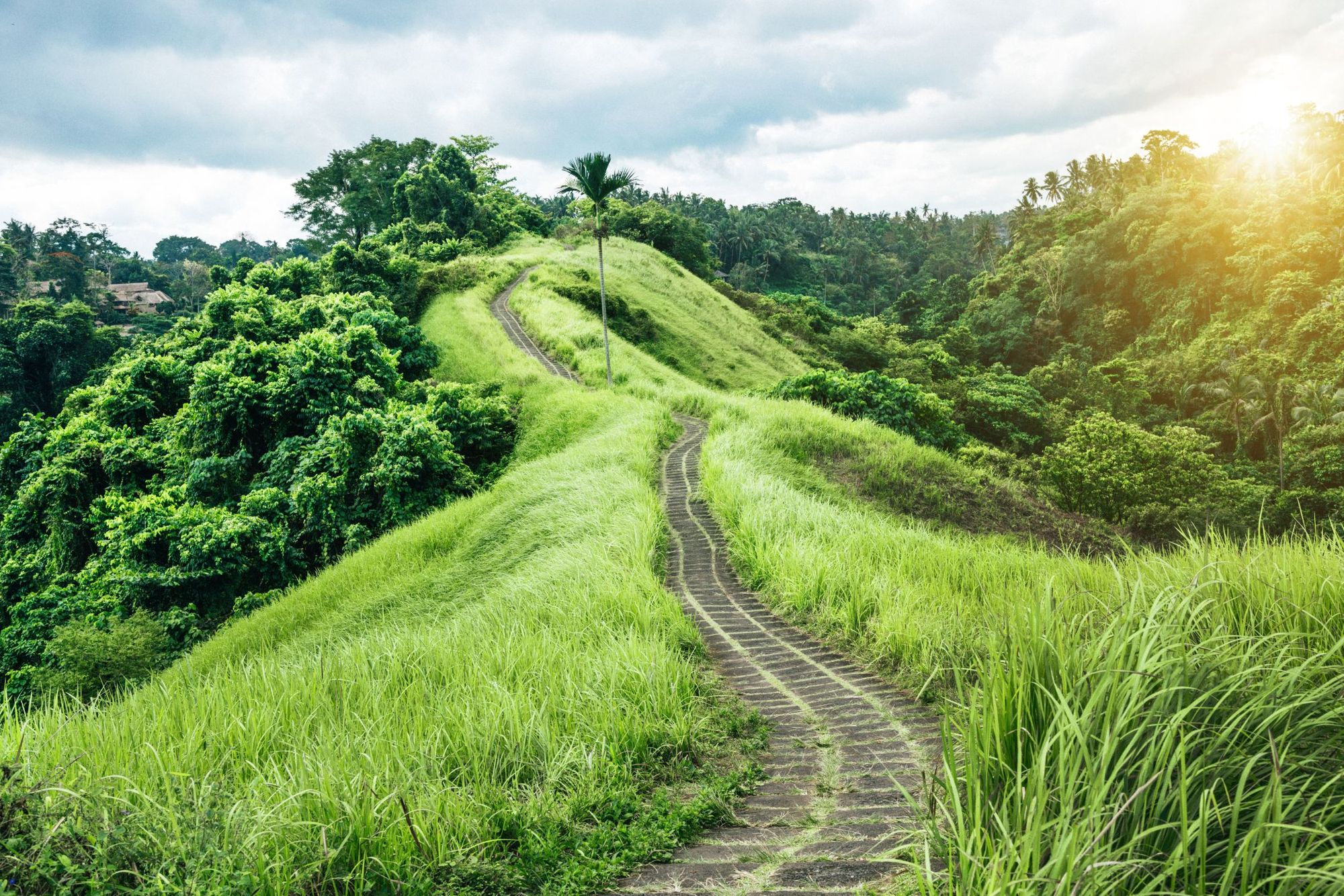
Ubud is Bali’s cultural capital - but it’s also one of the tourist hubs on the island, and the scooters, tourist buses and determined market sellers can be overwhelming. Escape the chaos by heading to the smaller, surrounding villages, like Peliatan, Sayan or Campuhan, which you can walk the scenic Campuhan Ridge Walk. This stroll only takes around an hour to walk, but the scenery really is quite dramatic. The path is gentle, and weaves 1.25-mile (2km) up the ridgeline - a tranquillity which belies its proximity to the bustling Ubud.
Most of the attractions are a little further afield, and so a lot of people rent a scooter or motorbike, which costs around 50,000-70,000Rp (£2.69/$3.40-£3.75/$4.75) per day. Careful on the roads though - driving in Bali (and in Ubud in particular!) can be hectic and dangerous, so absolute concentration is required. Tourists have a bad reputation on the roads, so try and not add to it.
Back in the town, it's your call whether you want to visit the tourist hotspots; the likes of the Ubud Art Market and Sacred Monkey Forest Sanctuary, the latter of which is full of macaques. If you go, you’ll see monkeys as soon as you pull up. Watch your passports and phones; the monkeys are well practised thieves!
The Tegallalang Rice Terraces are very much on the beaten track in Bali (a 30-minute drive from Ubud), but they are beautiful - the layering greenery punctuated by tall palm trees, and if you turn up early, you can beat some of the crowds. Drive on to Pura Tirta Empul, another busy but beautiful spot, to find a natural spring, where there are 13 fountains, used for washing and purification. Other nearby temples include Pura Taman Saraswati, the Lotus Garden Temple of Saraswati.
6. Go Animal Spotting on the Tegal Bunder Trail, in Taman Nasional Bali Barat (West Bali National Park)
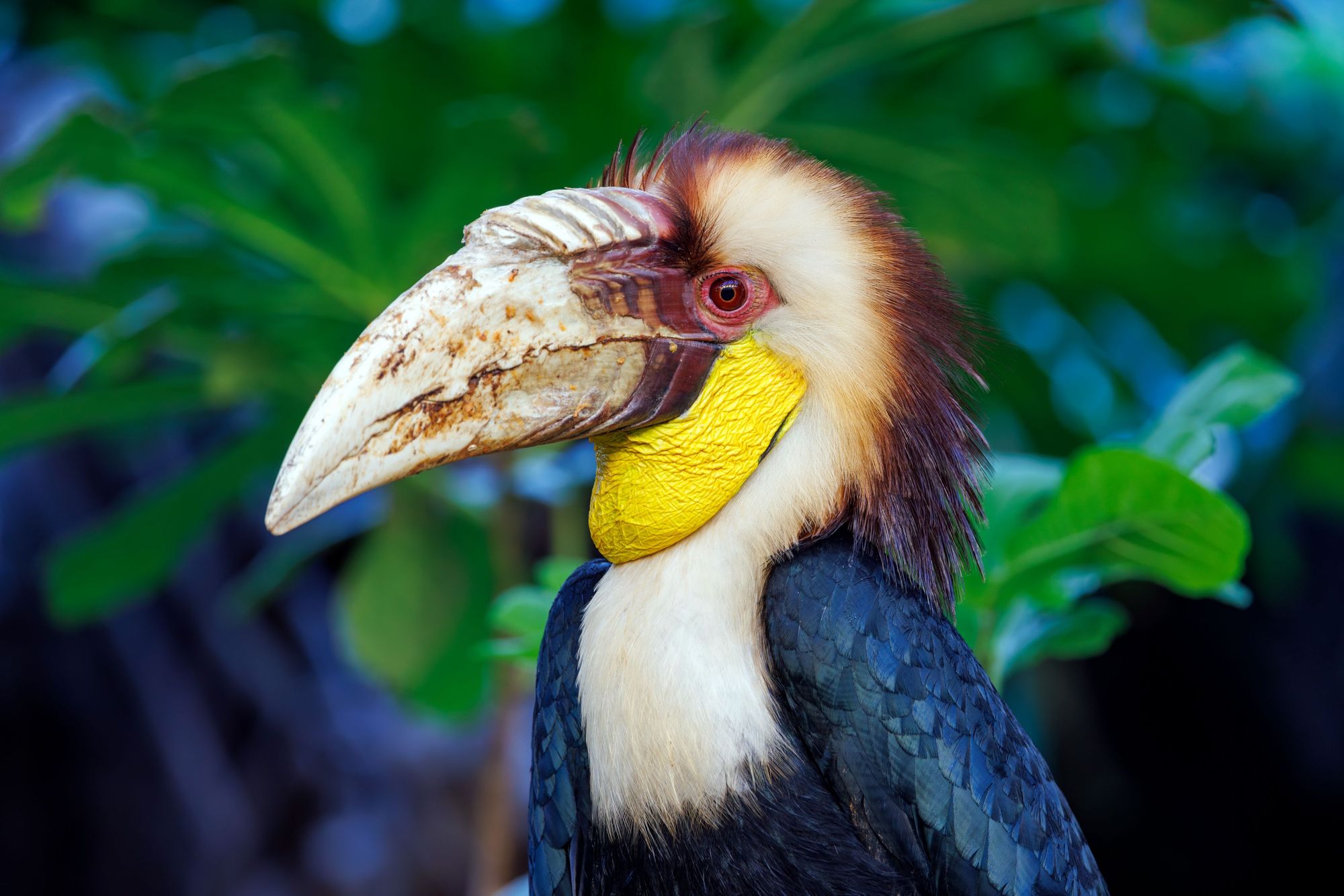
West Bali National Park, known in Indonesian as Taman Nasional Bali Barat, is a 300 square mile (760 square kilometre) wildlife reserve established in 1941. It's home to more than 200 plant species and 300 species of animals and birds. The park is a mosaic landscape of dense rainforest, wide, dry savannas and it even borders the coast, where mangrove swamps dot the water. Guides are compulsory to visit, and can help tailor the walk you take to your interests.
You might catch a glimpse of an anteater, Java buffalo, a sambar deer, marbled cat, hornbill or the endangered Bali starling, the island’s only remaining endemic bird.
The Tegal Bunder Trail is a casual two-hour walk around the park, a great option for spotting birds, and can be combined with a mangrove boat trip on the coast.
The tougher Gunung Klatakan Trail will take you into the southeast and the rainforest, bringing you out at the eponymous volcano. If you’re lucky, you might catch a glimpse of an anteater, Java buffalo, a sambar deer, marbled cat, hornbill or the endangered Bali starling, the island’s only remaining endemic bird.
7. Hike the Twin Lakes of Tamblingan and Buyan
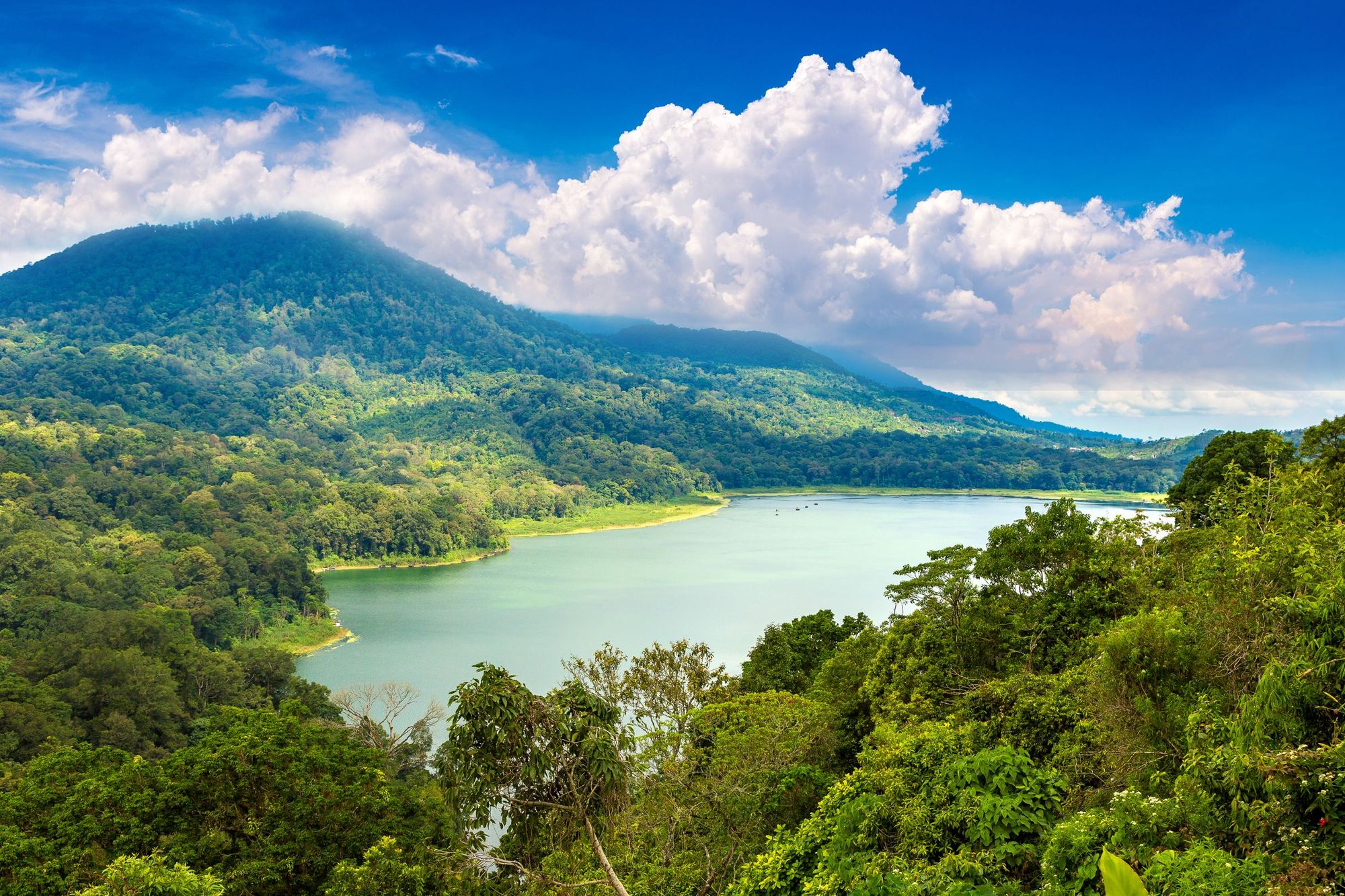
Danau is the Indonesian word for 'lake' and Danau Tamblingan is a delightful caldera lake in Munduk, at the foot of Gunung Lesung. It’s a tranquil place, without much overdevelopment, and there are beautiful hiking paths, not least through the surrounding forests to Pura Ulun Danu Tamblingan temple.

The feeling here is very rural. It’s a far cry from the tourist hotspots of the area, and a big part of the beauty comes from the fact that another, even bigger lake, Danau Buyan, is right next to Tamblingan. Walk to the Twin Lake viewpoint, and visit the stunning Munduk Waterfall, hidden in the forest, and the journey will be well worth your time. To get a unique experience on the lakes, hire a guide, and head out to cross the water in a traditional dugout canoe.
8. Discover the Shipwrecks Beneath Tulamben
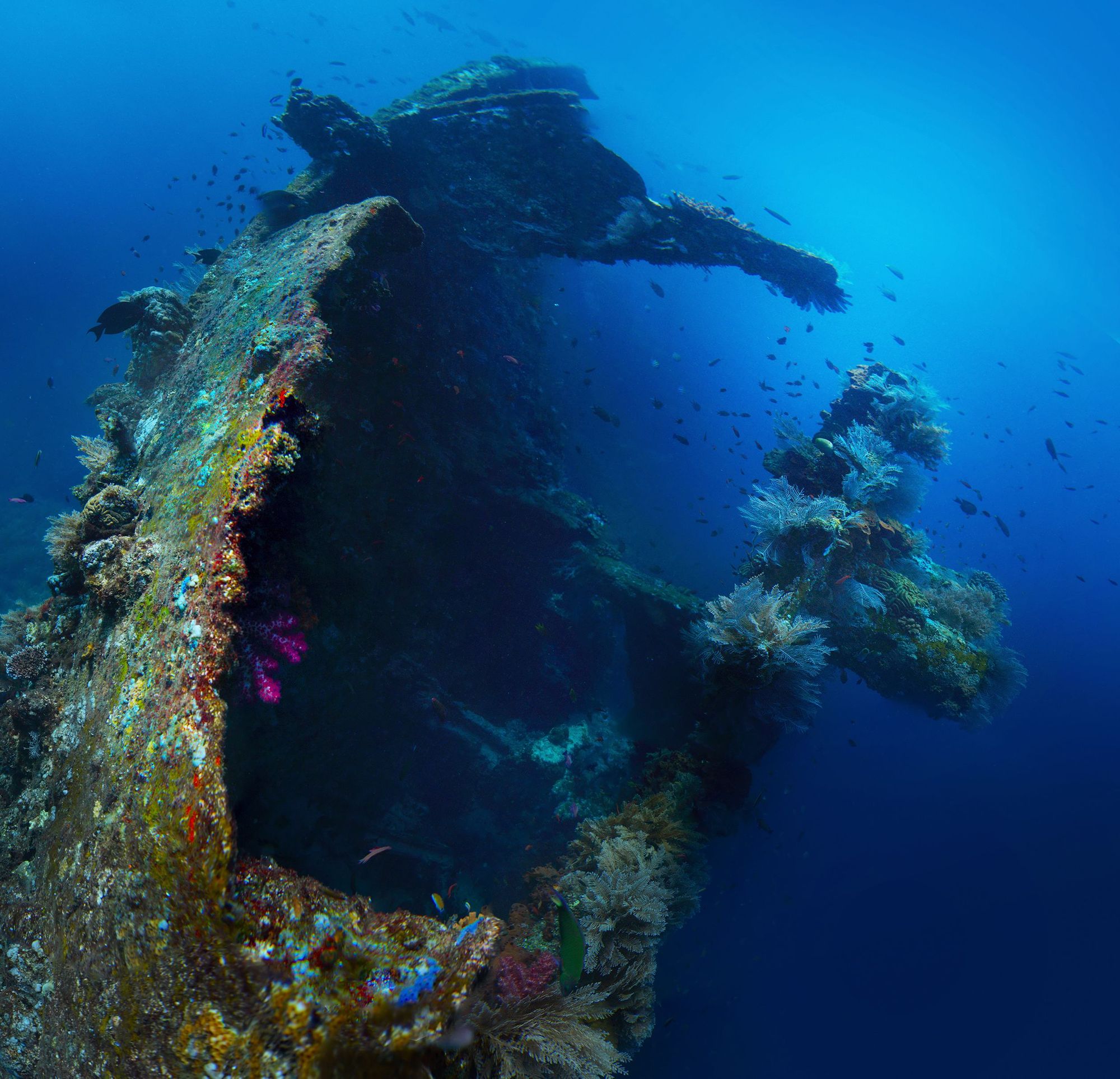
We can't talk about Bali without mentioning the coastlines, which attract thousands of surfers, divers and snorkelling enthusiasts each year. The most accessible of these activities is the latter - and there are plenty of places on Bali to go snorkelling, and see vibrant coral reefs and rich marine life in the process.
Head to the tiny village of Tulamben in the northeast to snorkel with views of the mighty Agung, near black sand beaches. Sunfish, manta rays, reef sharks, sea turtles, clown fish and so much more live in these waters - and you can also find the odd shipwreck, fascinating to explore.
The remnants of the 125m-long USAT Liberty lie just 5m beneath the surface of the water of Tulamben. The boat was built in New Jersey in 1918 and was used during WW1 and WW2, before being torpedoed by a Japanese submarine in 1942, and sinking here. While frequented by divers, scuba kit also gives a great view.
Inspired? Check out our range of adventure holidays in Bali now!

